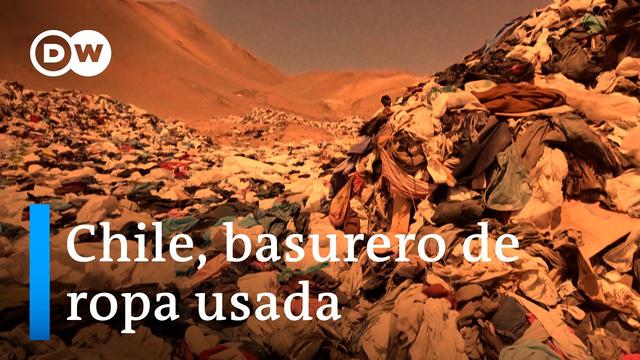
The Atacama Desert in northern Chile is the most arid non-polar place in the world: miles of nothing with suffocating heat and non-existent humidity.
In the middle of this inhospitable landscape lies something unexpected: a clothing dump. 100,000 tons of garments found their final destination in the desert, many with their label that marks that they were never used.
The garbage dump is accessed from Alto Hospicio, a town near the port city of Iquique. 25 kilometers offshore, along a path marked out by white garments.
"They recently changed them so that people don't get to the dump," Franklin Zepeda told TN, an entrepreneur who has denounced this dump for 10 years.
In the place, mountains of clothes, shoes, accessories. New jeans, unworn shoes, some even with the price tag. All kinds of brands and origins.
Where did all those clothes come from?

Chile was long a hub for second-hand clothing made in China and Bangladesh, according to DW. The garments first pass through Asia, Europe and the United States before disembarking in Latin America. Everything that is not sold reaches the Atacama.
39,000 tons of everything that brands can't sell in Chile ends up in garbage dumps in the middle of the desert. And why not in the state waste centers? The municipalities reject the clothing because it is not biodegradable and contains chemicals that are harmful to the environment.
A highly polluting industry, in numbers:
Fast fashion became trash fashion or junk fashion: 85% of the textiles produced end up in landfills or are incinerated; and every second the equivalent of a truckload of clothes is burned.
The fashion industry contaminates water sources, due to the amount of this resource that is used and returns to the nappa with chemicals; the sea due to the release of microplastics and the air due to the toxic smoke when it burns.
But it also has social consequences.
A few kilometers from the Atacama landfill, “la toma” was formed, in the words of Franklin Zepeda, a land occupied with precarious shacks, most of them belonging to Venezuelans.
The inhabitants of “la toma” are the ones who go through the Atacama garbage dump, looking for clothes that they can use and resell.
Chile approved the Responsibility Law in 2016 Extended Producer, a legal waste management instrument that obliges the manufacturers of certain products to organize and finance the management of waste derived from their products. In 2021, the Chilean Government included the textile industry among those regulated by this regulation.
But in addition to legal regulations, some entrepreneurs seek more practical solutions. Because of the Atacama landfill, Franklin Zepeda founded Ecofibra, a company that uses textiles and processes them to generate insulation systems for homes.
Even so, there is a need to modify the logic of consumption and change fast fashion to slow fashion. There are several options: from buying from local producers, buying used clothing, donating and reselling your own.